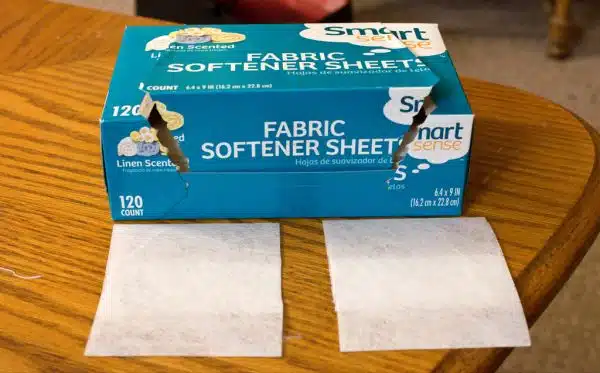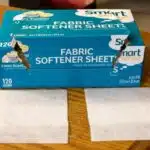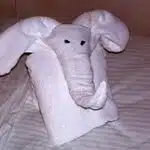As a laundry expert, it is not uncommon to receive questions about the optimal amount of dryer sheets to use per load. While it may seem trivial, the answer can have significant implications for both the effectiveness and longevity of your clothes. In this article, we will explore the science behind dryer sheets and provide guidance on how many should be used per load.
Dryer sheets are designed to reduce static cling, soften fabrics, and leave a pleasant scent on your clothes. However, using too many or too few can result in suboptimal results. Additionally, overuse can cause buildup on your dryer’s lint filter and decrease its efficiency. By understanding the properties of dryer sheets and their impact on clothing fibers, we can determine the ideal number to use for each load. So let us delve into the details and help you achieve perfectly soft, fresh-smelling laundry every time.
The Science Behind Dryer Sheets
Dryer sheets are a popular choice for many households when it comes to doing laundry. These sheets are designed to reduce static cling, soften fabrics and add fragrance to clothes. The chemical composition of dryer sheets is what makes them effective in accomplishing these tasks.
Most dryer sheets contain a mixture of chemicals that include fragrances, softening agents, and anti-static agents. Fragrances are added to give clothes a fresh scent while softening agents help to make the fabric feel softer. Anti-static agents are used to prevent static electricity from building up on clothes during the drying process.
The use of dryer sheets has been linked with allergies in some people due to the presence of certain chemicals in their composition. In particular, fragrances added to dryer sheets can cause skin irritation and respiratory problems for individuals with sensitive skin or allergies. However, most manufacturers now offer fragrance-free options that do not cause these issues. It is important to consider this factor when selecting dryer sheets for your laundry needs.
As we move into the next section about reducing static cling, it’s important to note that this is a common issue faced by many during the laundry process. While dryer sheets can be effective in reducing static cling, there are other steps you can take as well.
Reducing Static Cling
As you pull your freshly laundered clothes out of the dryer, you may find yourself frustrated by the sight of static cling. This common laundry woe can make it difficult to put clothes on and can even cause discomfort throughout the day. Fortunately, there are several ways to prevent static cling that don’t involve using excessive amounts of dryer sheets.
Static cling prevention starts in the washer. One way to reduce static is to use a fabric softener alternative, such as white vinegar or baking soda. These natural alternatives work by balancing the pH level in the water and reducing friction during the wash cycle. Another option is to skip fabric softener altogether and opt for a detergent with added fabric softening properties.
In addition to using natural alternatives and special detergents, there are a few other steps you can take to prevent static cling. Here are four tips to keep in mind:
- Don’t overload your dryer – give your clothes plenty of room to move around.
- Dry synthetic fabrics separately from natural fibers.
- Remove clothes from the dryer while they’re still slightly damp.
- Use wool dryer balls instead of fabric softener sheets – these balls help separate clothes and reduce friction without leaving any residue.
By following these tips for static cling prevention, you’ll be able to enjoy fresh, clean laundry without any frustrating side effects.
Transitioning into the subsequent section about ‘softening fabrics’: Now that we’ve covered how to prevent static cling, let’s talk about another common laundry concern: softening fabrics.
Softening Fabrics
To reduce static cling, it’s important to choose the right fabric softener for your needs. However, some people prefer to use fabric softener alternatives or natural remedies. These can include adding a cup of white vinegar to the rinse cycle or using wool dryer balls.
One popular fabric softener alternative is baking soda. Simply add half a cup of baking soda to your laundry load during the wash cycle to help soften fabrics and reduce static cling. Another option is to use essential oils in place of traditional fabric softeners. Add a few drops of your favorite scent, such as lavender or lemon, directly onto a clean washcloth and toss it into the dryer with your clothes.
It’s important to note that while these alternatives can be effective, they may not leave a pleasant scent on your clothes like traditional fabric softeners do. If you want your laundry to have a fresh scent after washing, consider using scented laundry detergent or adding scent boosters during the wash cycle. Alternatively, you could try hanging your clothes outside to dry in the sunshine for a crisp, natural scent.
Leaving A Pleasant Scent
As the saying goes, “a good scent is a great investment.” Choosing the right fragrance for your laundry load can make all the difference in how it affects your mood and those around you. The scent of clean clothes can give you a sense of accomplishment and fresh start to your day.
The impact of scent on mood is well-documented. Certain fragrances have been shown to be calming, while others are energizing. For example, lavender has been found to reduce stress and anxiety levels, while citrus scents can increase alertness and focus. When selecting a dryer sheet fragrance, consider what mood you want to create in your home.
It’s important to note that using too much fragrance can be overwhelming and even cause irritation to sensitive skin. Be sure to follow the recommended usage instructions on your dryer sheet packaging. Using the right amount will not only ensure that your clothes smell fresh but also extend the life of your dryer sheets. In the next section, we will discuss the importance of using the right amount of dryer sheets per load to maximize their effectiveness.
The Importance Of Using The Right Amount
Using the right amount of dryer sheets is crucial in achieving the desired softness and fragrance for your clothes. Improper usage can lead to poor results, such as clothes that are still rough or have an overwhelming scent. It is recommended to use only one sheet per load, depending on the size of the load and the type of machine being used.
Proper storage of dryer sheets is also important to ensure maximum effectiveness. Keep them in a dry place and away from direct sunlight to prevent them from losing their fragrance or becoming damp. Remember that using expired or damaged sheets will not only be ineffective but may also cause damage to your machine.
Dispelling myths about using more than one sheet for larger loads or tougher fabrics can save you money and prevent overuse. One sheet is enough to provide the desired results without causing any harm to your clothes or machine. Overuse can lead to a buildup of waxy residue on clothing, which can cause skin irritation and even clog up your dryer’s venting system.
As we have seen, using the right amount of dryer sheets is essential in achieving optimal results while protecting both our clothes and machines. However, overusing these products can lead to negative consequences that should be avoided. In the next section, we will discuss how overuse can impact both our health and environment, highlighting why it is crucial always to follow recommended guidelines when using laundry products.
Overuse And Its Consequences
Using the right amount of dryer sheets can make a significant difference in the efficiency and effectiveness of your laundry. However, overuse can lead to consequences that are harmful to both your clothes and your dryer. When you use too many dryer sheets, they can leave a residue on your clothing, making them appear dull and lifeless. Moreover, overusing these products can clog up the lint filter in the dryer, reducing its performance and increasing the risk of fires.
Dosage recommendations for using dryer sheets vary depending on the brand and type of product you choose. Generally speaking, one or two sheets will suffice for most loads of laundry. However, if you are dealing with particularly large or heavy items such as blankets or comforters, you may need to use more than one sheet. It is important to read the instructions on the packaging carefully before using any product to avoid overuse or underuse.
Overuse consequences can be costly both in terms of money spent on additional products and repairs needed for damaged machines. Therefore, it is crucial to follow dosage recommendations when using any laundry product such as dryer sheets. By doing so, you will not only save time and money but also prolong the lifespan of your clothes and appliances.
Moving forward into our next section about underuse and its effects, it’s important to note that while overusing dryer sheets has negative consequences; underusing them can have equally damaging effects on your laundry. Let’s explore this further in detail.
Underuse And Its Effects
Proper usage of dryer sheets is essential to ensure that fabrics remain soft and static-free. However, underusing the sheets can lead to negative effects on the quality and longevity of the fabric. When too few sheets are used, clothes may become stiff and lose their softness, leading to discomfort when wearing them.
Furthermore, underuse can also cause an increase in static electricity. Static electricity is caused by the buildup of electric charge on the surface of a material. The friction between garments during washing and drying creates an imbalance of electrons, causing static cling. Proper usage of dryer sheets helps to neutralize these charges and reduce static cling while increasing fabric longevity.
In summary, it is crucial to use dryer sheets in the appropriate amount for each load. Underuse not only affects the comfort level but also impacts the quality and lifespan of fabrics negatively. By using dryer sheets appropriately, we can reduce static cling while protecting our garments’ integrity for long-term use.
Transition: To determine the ideal number of dryer sheets to use per load effectively, we must consider various factors such as load size and fabric type.
Determining The Ideal Number
Underuse of dryer sheets is a common problem, and it can have a significant impact on the effectiveness of the laundry process. When you use too few dryer sheets, your clothes may come out of the dryer with static cling, wrinkles, or an unpleasant odor. To avoid these issues, it’s important to determine the ideal number of dryer sheets to use per load.
Calculating effectiveness is key when determining the appropriate number of dryer sheets to use. Start by experimenting with different amounts until you find the amount that works best for your particular washer and dryer. Begin by using one sheet per load and gradually increasing or decreasing the number until you achieve your desired results.
Here are three additional tips for finding the perfect number of dryer sheets:
- Consider the size of your load: The larger your load, the more dryer sheets you will need to effectively reduce static and soften fabrics.
- Use more sheets for heavier fabrics: If you’re drying heavy items like towels or bedding, you may need to use more than one sheet to achieve optimal results.
- Be mindful of fragrance sensitivities: If you or someone in your household has sensitive skin or allergies, choose unscented dryer sheets or use fewer scented ones.
By following these guidelines and experimenting with different amounts, you can determine exactly how many dryer sheets to use per load for maximum effectiveness and efficiency. And don’t forget – always follow the manufacturer’s recommendations for safe usage!
Considering The Size Of The Load
Load size considerations are crucial when determining how many dryer sheets to use per load. The size of the load can significantly impact the effectiveness of the dryer sheet. For smaller loads, using too many sheets can result in an overpowering scent and potential damage to the fabric due to excessive softening agents. On the other hand, larger loads may require more than one sheet to achieve optimal softness and static control.
To determine the optimal sheet quantity equation for your specific load size, consider the weight of your laundry as a general guide. One standard dryer sheet is typically recommended for loads weighing between four and six pounds. For larger loads, two sheets may be necessary to provide sufficient softness and static control. However, keep in mind that some fabrics may require fewer or more sheets than others due to their composition.
It is essential to find a balance between using enough dryer sheets for effective results while also avoiding overuse that can potentially harm your clothes or cause them to retain an unpleasant scent. By taking into account load size considerations and following recommended quantity guidelines based on weight, you can ensure that your laundry comes out of the dryer feeling soft, smelling fresh, and free from static cling. Next, we will delve into another critical factor when it comes to determining how many dryer sheets are appropriate – evaluating the fabric type.
Evaluating The Fabric Type
When it comes to laundry, not all fabrics are created equal. Fabric compatibility is an important factor to consider when deciding on the number of dryer sheets to use per load. Some materials, such as cotton and linen, can handle multiple dryer sheets without any negative effects. However, other fabrics, like silk and rayon, are more delicate and may be damaged by excessive exposure to fabric softeners.
Another consideration when using dryer sheets is stain resistance. Certain materials are more prone to staining than others and require extra care in the laundering process. For example, synthetic fibers like polyester and nylon tend to attract oil-based stains that can be difficult to remove. Using too many dryer sheets can actually make these stains worse by leaving behind a filmy residue on the fabric.
In order to determine the appropriate number of dryer sheets for each load of laundry, it’s important to take into account both fabric type and stain resistance. By carefully evaluating these factors, you can ensure that your laundry comes out looking and feeling its best every time. In the next section, we will explore how temperature and humidity factors can also impact your laundry routine.
Temperature And Humidity Factors
Temperature is an important factor in laundry care, as it affects the rate at which detergent, fabric softeners, and other products are released from the wash water. Humidity can also influence the efficiency of a laundry load, as the amount of water in the air impacts the ability of fibres to absorb moisture. Load size, fabric type, and heat setting are all additional considerations when determining how many dryer sheets to use per load in order to maximize static reduction, softening, odor and lint reduction, efficiency, and cost. Finally, environmental considerations, such as detergent and fabric softener reuse, and the use of fragrances should also be taken into account.
Temperature
As a laundry expert, I understand the importance of using the right number of dryer sheets to get the best results. One factor that affects the effectiveness of dryer sheets is temperature. Temperature can impact how well dryer sheets work because it affects the evaporation rate of the fabric softening agents in them.
To achieve optimal results, it’s essential to use the right number of dryer sheets for each load based on its temperature and drying time. For example, if you’re washing a load with low temperatures, you should use fewer dryer sheets than in warmer loads. Similarly, if your drying time is shorter than usual, you should also use fewer dryer sheets to avoid overloading the fabric with too much softener.
In summary, when choosing how many dryer sheets to use per load, consider your drying time and temperature. Using too many or too few can affect the quality of your clothes and leave behind residue. By following these guidelines and being mindful of these factors, you can ensure that your laundry comes out smelling fresh and feeling soft every time.
Humidity
As a laundry expert, I know that temperature is not the only factor that affects the effectiveness of dryer sheets. Humidity can also play a significant role in how well these fabric softening agents work. High humidity levels can cause fabrics to retain moisture, making them feel damp and uncomfortable, which can be unpleasant for anyone wearing them.
To combat this issue, it’s crucial to control the humidity levels in your laundry room. One way to do this is by using dehumidifiers or other moisture control devices. These devices work by removing excess moisture from the air, creating a more comfortable environment for both you and your clothes.
By managing humidity in your laundry room and ensuring proper temperature levels during drying, you can achieve optimal results when using dryer sheets. This will help keep your clothes feeling soft and smelling fresh every time you wash them, leaving you feeling confident and comfortable in your own skin.
Tips For Optimal Use
To achieve optimal results from your dryer sheets, it is recommended that you use only one sheet per load. Using more than one can lead to excessive buildup of the active ingredients on your clothes, which can cause skin irritation and leave behind a residue. Additionally, using too many dryer sheets at once can reduce the effectiveness of the sheet’s softening and static-reducing properties.
If you’re looking for an alternative to traditional dryer sheets, consider using reusable sheets made from materials like wool or silicone. These sheets can be used multiple times and are environmentally friendly since they don’t generate waste like traditional single-use dryer sheets. Plus, they don’t leave behind any residue on your clothes, making them a great option for those with sensitive skin.
To avoid leaving behind unsightly residue on your clothes, it’s important to be mindful when using dryer sheets. Make sure to follow the manufacturer’s instructions when adding them to your laundry load, and always remove them before transferring your clothes to the dryer. By taking these steps and exploring alternative options like reusable sheets, you can achieve fresh, clean laundry without worrying about potentially harmful chemicals or unwanted buildup on your clothes.
As an alternative to disposable dryer sheets there are several products available that can provide similar benefits without creating excess waste or harsh chemical residues. One popular option is using wool dryer balls in place of traditional fabric softener sheets. These balls work by bouncing around in the dryer alongside your clothing items and helping separate them as they dry – preventing clumping that leads to wrinkles and reducing static electricity buildup as well. Another option is simply adding a half cup of white vinegar into the washing machine during the rinse cycle – this works as a natural fabric softener that won’t leave any residue on your clothing while also helping kill odor-causing bacteria!
Alternatives To Dryer Sheets
As an expert in laundry care, it is important to note that dryer sheets are not the only solution to keeping clothes smelling fresh. Eco-friendly alternatives can provide similar benefits without harming the environment. One option is to use wool dryer balls, which can be reused for multiple loads and help reduce drying time by up to 25%. Another alternative is adding a few drops of essential oils to a damp cloth and tossing it in the dryer with the clothes.
For those looking for a DIY approach, making your own dryer sheets can be a fun and easy project. Simply cut up old t-shirts or towels into small squares, saturate them with a mixture of vinegar and essential oils, and let them dry before using in the dryer. This not only helps reduce waste but also saves money in the long run.
While traditional dryer sheets may seem like a convenient solution, it is important to consider their environmental implications. Many contain chemicals that are harmful to both humans and the planet. By exploring eco-friendly alternatives or making your own DIY options, we can all work towards creating a more sustainable future without sacrificing the quality of our laundry. In the subsequent section, we will delve further into these environmental implications and how they impact our daily lives.
Environmental Implications
According to the Environmental Protection Agency (EPA), Americans use approximately 2.5 billion dryer sheets annually. That’s a staggering amount of waste that impacts our environment. Each sheet contains chemicals that coat your clothes and create a fresh, clean scent. However, these chemicals can also contribute to air pollution and harm our respiratory health.
If you’re looking for an eco-friendly alternative to dryer sheets, consider using wool dryer balls. These reusable balls are made from natural materials and work by separating and fluffing up your clothes in the dryer. Not only do they reduce drying time, but they also soften clothes without the need for chemical-laden sheets.
The impact of using excessive amounts of dryer sheets goes beyond just environmental concerns; it can also affect the quality of your indoor air. The fragrances used in these products contain volatile organic compounds (VOCs) that can irritate our lungs and trigger allergies or asthma attacks. By switching to a more sustainable option like wool dryer balls, you’re not only doing your part for the planet but also protecting your family’s health.
Transition: While using eco-friendly alternatives is a great way to reduce your impact on the environment, there are also other steps you can take to maintain your dryer for maximum efficiency.
Maintaining Your Dryer For Maximum Efficiency
As we learned in the previous section, our daily actions can have significant environmental implications. One area where we can make a difference is in our laundry routine. By being mindful of how we use our dryers, we can reduce energy consumption and minimize our carbon footprint. One way to do this is by properly maintaining our dryers.
Maintaining your dryer is essential for ensuring its maximum efficiency. A poorly maintained dryer will not only consume more energy but also produce subpar results. To keep your dryer functioning optimally, you should regularly clean the lint filter after every load, as a clogged filter restricts airflow and reduces drying performance. Additionally, you should inspect the vent hose and remove any debris that may have accumulated over time.
Aside from regular cleaning, there are other measures you can take to maintain your dryer’s efficiency and prolong its lifespan:
- Schedule professional maintenance services once a year to ensure that all components are functioning correctly.
- Avoid overloading your dryer as this can cause it to work harder than necessary, leading to increased energy consumption.
- Consider using wool dryer balls instead of dryer sheets as they are reusable and chemical-free.
By adopting these practices and being mindful of how you use your dryer, you can not only save money on utility bills but also contribute to a more sustainable future without sacrificing quality or convenience.
Conclusion
In conclusion, using the right amount of dryer sheets per load can significantly impact your laundry experience. When used correctly, they can reduce static cling, soften fabrics, and leave a pleasant scent. It is important to follow the manufacturer’s instructions and avoid overusing them as it can lead to fabric damage and decrease their effectiveness.
As a laundry expert or scientist, I would recommend using one or two dryer sheets per load for optimal results. Think of it like seasoning your food; too little may not have an effect, while too much can ruin the dish. Additionally, consider alternative options such as wool dryer balls or reusable dryer sheets for a more eco-friendly approach.
Remember to also maintain your dryer to maximize efficiency and prolong its lifespan. Clean out the lint trap after every use and periodically check for any blockages in the venting system. By following these tips and tricks, you can achieve fresh, soft, and static-free laundry with ease.
Image Credits
- “Cut Dryer Sheets in Half and Reuse Them (98/365)” by trenttsd (featured)












![How To Keep Sheets On A Bed: 10 Strategies 12 Bed sheets [Explored 2013-04-27]](https://green-life.blog/wp-content/uploads/2023/04/pH7FwL8jspjq-150x150.jpg.webp)
















